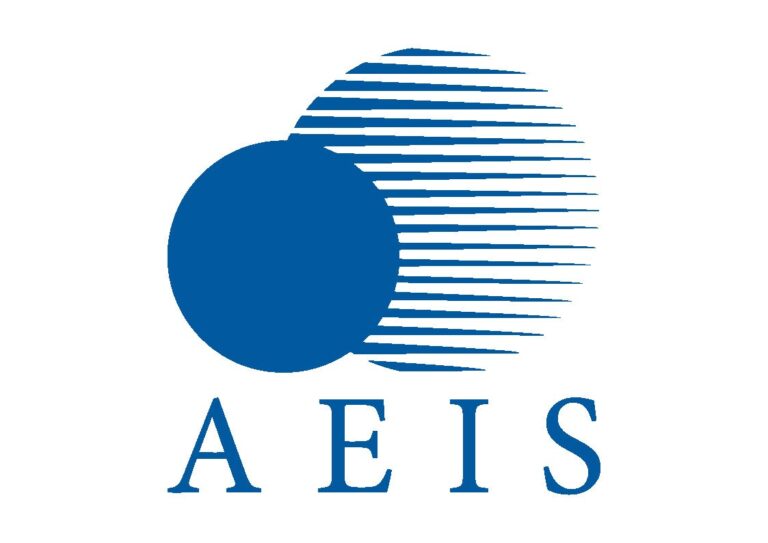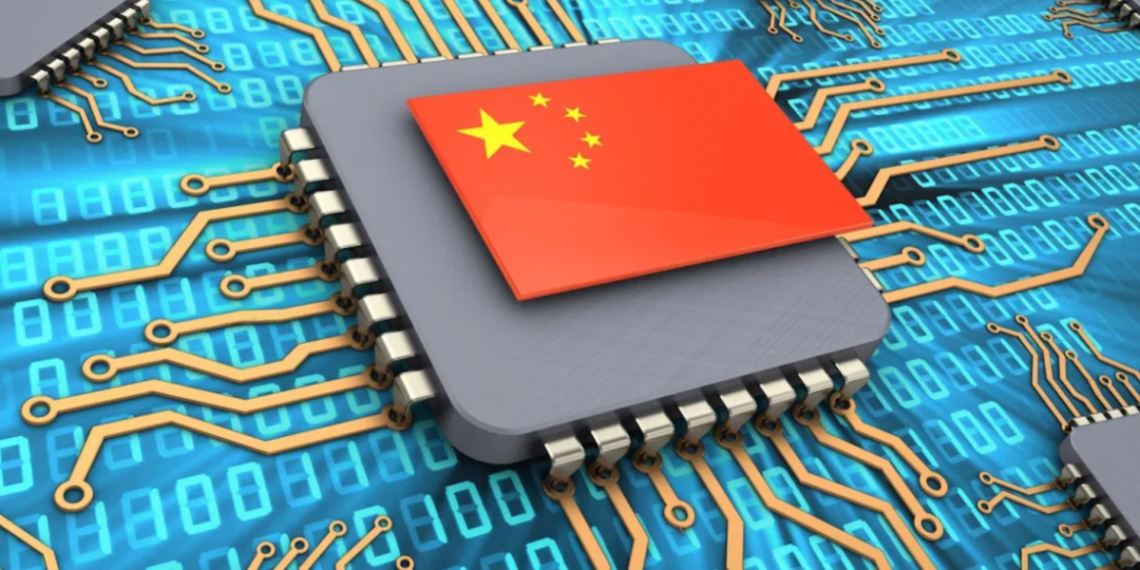In an exchange filing on September 3, China’s largest contract chipmaker Semiconductor Manufacturing International Corp. (SMIC) announced that it had signed an agreement with the Lin-Gang Special area—part of Shanghai’s free trade zone—to establish a new factory. The proposed US $8.87 bn worth foundry has a planned monthly production capacity of 100,000 12-inch wafers. SMIC will control at least 51 percent of the joint venture, and an investment entity designated by the Shanghai government will take a 25 percent stake. In March, SMIC announced that it would work with the Shenzhen government to invest in a US $2.35 billion project to produce 28nanometre (nm) and above integrated circuits to produce 40,000 12-inch wafers per month.
The COVID-19-induced global semiconductor chip crunch is not the only impetus behind the state-backed chip manufacturer’s aggressive expansion. The primary reason lies in the tense Sino-US geopolitical turf battle. Many Chinese tech companies, including national Champion Huawei, have become victims of the Sino-US trade war since 2018.
In September 2020, the US placed restrictions on exports to SMIC. In a letter dated September 25, the US Commerce Department directed that US firms must apply for a license to export certain products to SMIC, as per a Bloomberg report. The new export restrictions came when SMIC’s work was already taking a beating following Trump’s restrictions on Huawei, barring Huawei from buying semiconductors anywhere in the world, including from SMIC. As per a Credit Suisse report, Huawei’s chip unit was estimated to be around one-fifth of SMIC’s sales in 2020. In December, SMIC received the final blow. The Trump administration put SMIC and its ten subsidiaries on the Entity List of the US Commerce Department, i.e., the US’s trade blacklist, alleging that the company was providing technology to China’s military, a claim SMIC has denied.
Nevertheless the harsh restrictions, SMIC recorded a stellar growth in the first half of 2021. However, it did not climb up the value chain. While SMIC may be considered China’s “most technologically advanced chip maker”, its manufacturing processes are reported to be three generations behind if compared with the best in the industry such as Samsung and Taiwan Semiconductor Manufacturing company (TSMC). Its most advanced 14nm chips are far behind the current state-of-the-art 5nm chips. SMIC is technologically dependent on foreign companies to produce such ultra-modern chips. According to reports, about half of SMIC’s equipment currently originate from the US. SMIC, being on the Entity List, cannot procure equipment from many European or Japanese companies as there are US intellectual property-related issues with the US.
The rush to self-sufficiency post US trade blacklist
These measures have put Beijing in a tight spot. Although Beijing announced that it firmly opposed such action against SMIC and accused Washington of fabricating national security concerns to break international trade rules, it realised the urgency to pursue self-sufficiency in chip manufacturing. For a quick reference, China’s chip import for the last three years was above US $300 billion, far exceeding the second-most imported commodity crude oil.
The global chip crunch amidst a tech-focused trade war pushed China to boost the Made in China 2025 plan. This plan involved a key goal of manufacturing 40 percent of all semiconductors for domestic consumption by 2020 and up to 70 percent by 2025. However, in 2020, this plan is still far from the target of 40 percent at only 15 percent. In 2020, China’s State Council released the Policies of “Promoting High-quality Development of Integrated Circuit Industry and Software Industry” to address this acute deficit. In its 14th Five Year Plan (2021-2025), marking a shift from quantitative growth to quality development, China unveiled its plans to focus on research and development in seven “frontier technologies”, including strategic emerging technologies such as artificial intelligence, quantum information, brain science, and semiconductors. Chinese Premier Li Keqiang announced plans to ramp up spending on research and development by over 7 percent per year between 2021 and 2025.
China has additionally committed financial support to its domestic semiconductor ecosystem. China gave a corporate income tax break to chipmakers for up to 10 years while Integrated Chip (IC) design, IC equipment, IC materials, IC packaging, and IC testing enterprises were given a tax break of a maximum of five years. SMIC is the largest firm to benefit from the preferential tax policy. China also waived import duty on semiconductor machinery and raw materials. The government pledged support to eligible IC and software companies in raising funds at home and abroad, and assisting them in listing on China’s sci-tech innovation board (STAR market Shanghai) and growth enterprise market (GEM Hong Kong). In 2019, China’s National Integrated Circuit Industry Investment Fund rolled out its second phase of funding, intending to achieve self-reliance for China’s IC industry. Besides stock market financing and investment initiatives, Beijing encouraged provincial and local governments to invest or extend loan support to semiconductor companies.
Building human resources for manufacturing
Even though the government has heavily invested in the sector to boost domestic chip design and manufacturing, domestic chipmakers have not made significant progress because the industry is highly globalised, competitive, and market-driven. Cash is not enough for Chinese chip companies to compete. Massive factories made of concrete also require machinery and human resources.
Since China joined the chip race late, it knew its fastest way to fill the talent shortage was to attract overseas talent aggressively. While China targeted engineers from South Korea, Taiwan as well as Japan, it had the most success in Taiwan, largely owing to a common language and culture. As per reports, Chinese chipmakers hired hundreds of Taiwanese engineers from Taiwan Semiconductor Manufacturing Company (TSMC), Foxconn, MediaTek, Mstar, UMC, amongst others, by offering fat salaries and perks. The Co-Chief Executive and Vice-Chairman of Chinese chipmaking champion SMIC are former executives from the world’s biggest chipmaker, TSMC.
Taiwan was bound to act boldly as the semiconductor industry contributes about 15 percent of the total GDP of Taiwan. In March 2021, Taiwanese authorities raided the offices of two recruitment firms for reportedly robbing local semiconductor talent for an artificial intelligence (AI) chipmaker based in mainland China. The following month, Taiwan told local staffing companies to remove all listings for jobs in China to check the ongoing brain drain in the semiconductor industry. Taipei has, thus, reiterated that hi-tech talent is an “important issue of their national economic policy.” Earlier, the US had vilified China’s talent acquisition measures such as the Thousand Talents Programme conducted through the erstwhile State Administration of Foreign Experts Affairs (SAFEA).
US pressure on Chinese semiconductor companies
As for expanding the manufacturing capabilities of advanced chips, access to cutting-edge tools remains under the US government’s control because of intellectual property laws and global dominance. After denying SMIC access to advanced American technology, the US has resorted to blocking other procurements by SMIC. The Dutch government did not renew the export license for the extreme-ultraviolet lithography (EUV) machine, manufactured by photolithography giant ASML to China in 2019, under diplomatic pressure from the US. Earlier, the US had blocked the Chinese acquisition of semiconductor companies such as Lattice Semiconductor and Xcerra in 2017 and 2018, respectively.
The Biden administration continued the China containment strategy of its predecessor. Continuing limitations on ASML’s business with China was reportedly at the top of the telecon between newly appointed National Security Advisor Jake Sullivan and his Dutch counterpart in February 2021; what the White House called the two countries’ “close cooperation of advanced technologies”. A report published by the US National Security Commission on AI in March 2021 recommended, amongst other things, developing a coalition of states that would come up with a policy of presumptive denial of export licenses for semiconductor manufacturing equipment capable of producing chips at the 16nm node and below, particularly EUV equipment and ArF immersion lithography equipment. No torrent of money can wash away restrictions on indispensable tools, which is currently being denied for SMIC.
China is not in a lose-lose situation in terms of capabilities. Market research shows that less advanced yet highly commoditised chips used in Wi-Fi routers, microcontrollers, image sensors, amongst. constitute more than three-fourths of the total global production that China can manufacture. Surprisingly, the world’s factory is unable to do so for several reasons.
State media affiliate China Economic Weekly reported that about 13,000 companies switched to chip-related lines of business in the first 10 months of 2020 alone. While many of these companies might fail, the belief in Beijing is that a few may create breakthroughs. Despite solid policy backing of the semiconductor sector, the lofty ambitions of many homegrown companies turned into a fiasco. Last year, Nanjing-based Tacoma Semiconductor Technology, worth US $2.8 billion, went bankrupt. Reality hit China hard when the US $20-billion bubble of its “would be silicon saviour”—Wuhan Hongxin Semiconductor Manufacturing Company (HSMC)—deflated due to persistent malpractices within the company. Other companies, too, have faced similar problems over the last couple of years.
Following the failure of these multibillion-dollar chip projects, Beijing woke up to the problem of wasted resources by “companies with insufficient knowledge of integrated circuit development, which had blindly entered into projects”. In October 2020, the National Development and Reform Commission (NDRC) said it would ensure accountability in case of large losses and significant risks. It seems NDRC vainly tried to rectify the semiconductor industry. In July 2021, one of the creditors of potential national champion Tsinghua Unigroup, partially owned by a division of the prestigious Tsinghua University, requested a court to begin bankruptcy proceedings against the company. Such failures have put immense pressure on the domestic supply chain, forcing vendors to source fake chips to keep the business going. Therefore, China is placing its hope on its leading foundry SMIC to scale up operations.
Amidst the current geopolitical tussle, China is not likely to attain its target of independence in semiconductor manufacturing anytime soon. But given its track record in space programme development, China might surprise the world with its innovation.
(Source: Observer Research Foundation)










